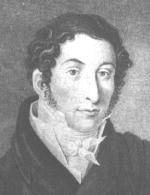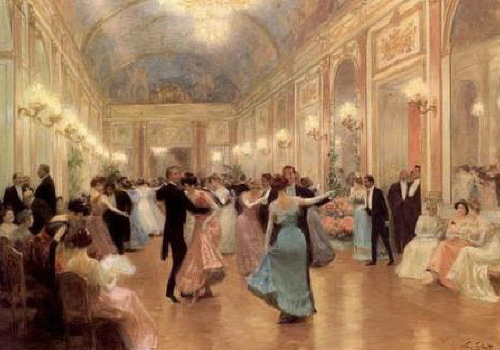The Best of Weber
Tracklist:
1. Concerto 1 Opus 73 - Alegro
2. Concerto 1 Opus 73 - Adagio
3. Concerto 1 Opus 73 - Rondo
4. Opus 79 Fá Menor
5. Oberon
6. Der Freischutz
7. Convite a Dança
-----------------------------------------------------------
베버(Carl Maria von Wever. 1786∼1826)
독일 국민가극의 창시자 
독일의 작곡가.
홀슈타인주(州) 오이틴 출생.
어려서 부친에게 초보적인 음악교육을 받은 다음, 미하엘 하이든(요제프의 동생)에게 사사하였다. 18세 때 브레슬라우오페라극장의 악장이 되었으나 2년 후 사직하고 유럽 각지를 돌아다녔으며 방랑생활 중에도 그는 오페라를 비롯하여 각종 작품을 썼다.
1813년 프라하의 오페라극장 지휘자가 되어 겨우 방랑생활은 끝났지만 17년 또다시 드레스덴으로 옮겼다. 이 무렵부터 낭만파음악가로서 그의 활동은 더욱 활발해졌으며, 유명한 '마탄의 사수'의 작곡에 착수하여 20년에 완성, 이듬해 6월 베를린에서 초연되었다.
이 오페라의 대성공에 힘입어 다시 '오이리안테 Euryanthe' (1832)를 작곡하였으나,
이 무렵부터 결핵이 심해지고 생계도 어려워졌다. 그러나 런던의 유명한 코벤트 가든극장으로부터 신작 오페라 작곡을 의뢰받아 '오베론:Oberon'을 작곡하였으며, 런던으로 가서 이 오페라를 초연(1826)한 후, 그 곳에서 사망하였다.
베버에게는 기악곡도 많지만 그의 천분은 역시 오페라였으며, 모차르트와 베토벤의 전통을 계승하여, 독일 오페라의 새로운 낭만파적인 단계를 개척하였다.

작품의 특징
베버는 독일 낭만주의 오페라에 공헌하였다.
그의 극음악은 극적이며 서사적인 표현에 있어서 획기적인 업적을 남겼다.
2개의 교향곡을 남기기도 했지만 교향시 방면의 새로운 개척으로 새싹을
틔워 후세에 큰 영향을 주게 된다.
베버의 멜로디는 모차르트의 흐름에 대체로 따른다.
부드럽고 아름다운 가락에 풍부한 영감의 기백을 엿볼 수 있다.
품위있고 정갈한 멜로디에 개성이 뚜렷이 나타나 있고 대담한 화성의 사용이
그것을 뒷받침해 주고 있다.
모든 악기의 음역을 최대한으로 구사했으며 각 악기의 특징적인 음색악기
사용에 있어서 새로운 기원을 장만했다.
< 영어 위키백과>
Carl Maria Friedrich Ernst von Weber (18/19 November 1786 -- 4/5 June 1826) was a German composer, conductor, pianist, guitarist and critic, one of the first significant composers of the Romantic school. Weber's operas Der Freischütz, Euryanthe and Oberon greatly influenced the development of the Romantic opera in Germany. Der Freischütz came to be regarded as the first German "nationalist" opera, Euryanthe developed the Leitmotif technique to a hitherto-unprecedented degree, while Oberon may have influenced Mendelssohn's music for A Midsummer Night's Dream and, at the same time, revealed Weber's lifelong interest in the music of non-Western cultures. This interest was first manifested in Weber's incidental music for Schiller's translation of Gozzi's Turandot, for which he used a Chinese melody, making him the first Western composer to use an Asian tune that was not of the pseudo-Turkish kind popularized by Mozart and others. A brilliant pianist himself, Weber composed four sonatas, two concertos and the Konzertstück (Concert Piece) in F minor, which influenced composers such as Chopin, Liszt and Mendelssohn. The Konzertstück provided a new model for the one-movement concerto in several contrasting sections (such as Liszt's, who often played the work), and was acknowledged by Stravinsky as the model for his Capriccio for Piano and Orchestra. Weber's shorter piano pieces, such as the Invitation to the Dance, were later orchestrated by Berlioz, while his Polacca Brillante was later set for piano and orchestra by Liszt. Weber compositions for woodwind instruments occupy an important place in the musical repertoire. His compositions for the clarinet, which include two concertos, a concertino, a quintet, a duo concertante, and variations on a theme (posthumously), are regularly performed today. His Concertino for Horn and Orchestra requires the performer to simultaneously produce two notes by humming while playing—a technique known as "multiphonics". His bassoon concerto and the Andante e Rondo ungarese (a reworking of a piece originally for viola and orchestra) are also popular with bassoonists. Weber's contribution to vocal and choral music is also significant. His body of Catholic religious music was highly popular in 19th-century Germany, and he composed one of the earliest song cycles, Die Temperamente beim Verluste der Geliebten ([Four] Temperaments on the Loss of a Lover). Weber was also notable as one of the first conductors to conduct without a piano or violin. Weber's orchestration has also been highly praised and emulated by later generations of composers -- Berlioz referred to him several times in his Treatise on Instrumentation while Debussy remarked that the sound of the Weber orchestra was obtained through the scrutiny of the soul of each instrument. His operas influenced the work of later opera composers, especially in Germany, such as Marschner, Meyerbeer and Wagner, as well as several nationalist 19th-century composers such as Glinka. Homage has been paid to Weber by 20th-century composers such as Debussy, Stravinsky, Mahler (who completed Weber's unfinished comic opera Die drei Pintos and made revisions of Euryanthe and Oberon) and Hindemith (composer of the popular Symphonic Metamorphosis of Themes by Carl Maria von Weber). Weber also wrote music journalism and was interested in folksong, and learned lithography to engrave his own works.
'♣ 음악 감상실 ♣ > [낭만주의]' 카테고리의 다른 글
| Giacomo Meyerbeer (자코모 마이어베어) (0) | 2015.08.15 |
|---|---|
| Johann Peter Pixis (0) | 2015.08.11 |
| Carl Czerny - 100 Studi Op.599 /VARIATIONS (Themes: Mozart, Schubert, Bellini, Auber, Rode and Haydn) (0) | 2015.06.10 |
| 카를 체르니 작품 모음 (0) | 2015.06.07 |
| 도메니코 가에타노 마리아 도니체티 (0) | 2015.01.15 |